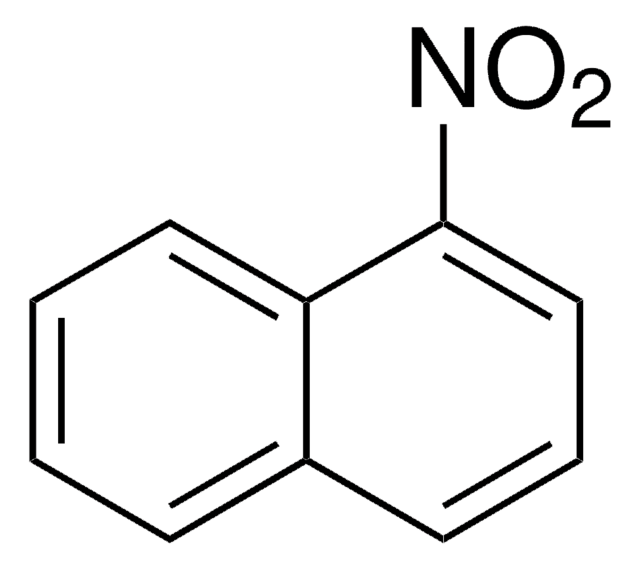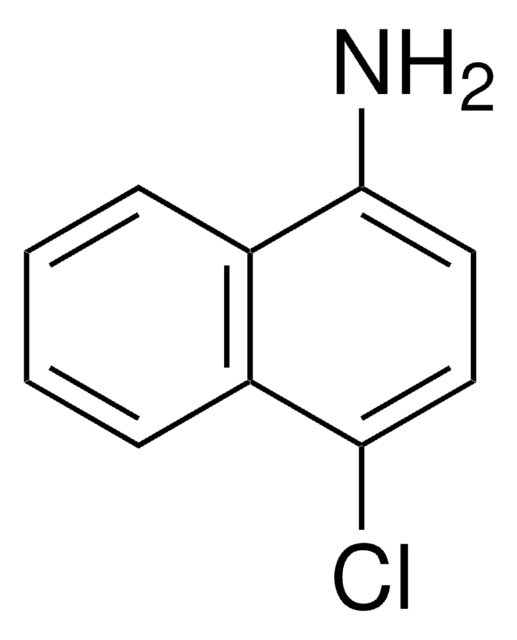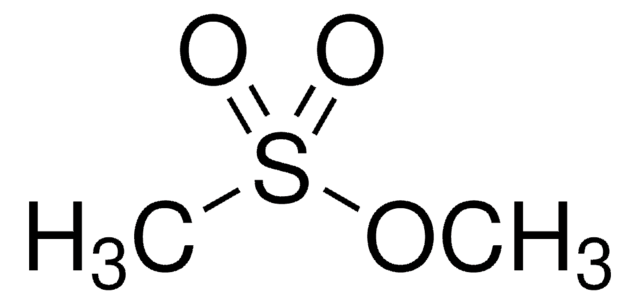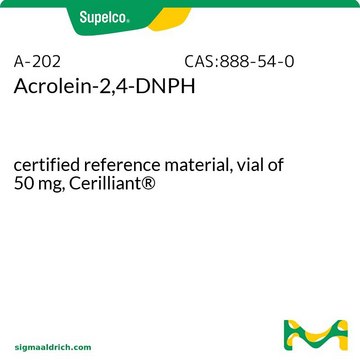推荐产品
等級
certified reference material
agency
BCR®
製造商/商標名
JRC
技術
HPLC: suitable
gas chromatography (GC): suitable
bp
304 °C (lit.)
mp
53-57 °C (lit.)
密度
1.223 g/mL at 25 °C (lit.)
形式
neat
儲存溫度
2-8°C
SMILES 字串
[O-][N+](=O)c1cccc2ccccc12
InChI
1S/C10H7NO2/c12-11(13)10-7-3-5-8-4-1-2-6-9(8)10/h1-7H
InChI 密鑰
RJKGJBPXVHTNJL-UHFFFAOYSA-N
正在寻找类似产品? 访问 产品对比指南
一般說明
1-Nitronaphthalene, belonging to the class of nitrated-polycyclic aromatic hydrocarbons, is persistent in the environment. It is produced from direct sources such as diesel, gasoline exhaust and gas-phase reactions of polycyclic aromatic hydrocarbons (PAHs) with oxides of nitrogen.
分析報告
For more information please see:
BCR306
BCR306
法律資訊
BCR is a registered trademark of European Commission
訊號詞
Warning
危險聲明
危險分類
Acute Tox. 4 Oral - Aquatic Chronic 2 - Flam. Sol. 2
儲存類別代碼
4.1B - Flammable solid hazardous materials
水污染物質分類(WGK)
WGK 2
閃點(°F)
Not applicable
閃點(°C)
Not applicable
個人防護裝備
Eyeshields, Faceshields, Gloves, type P3 (EN 143) respirator cartridges
Determination and comparison of nitrated-polycyclic aromatic hydrocarbons measured in air and diesel particulate reference materials
Bamford AH, et al.
Chemosphere, 50 (5), 575-587 (2003)
Myong Gyong Lee et al.
American journal of respiratory cell and molecular biology, 38(3), 300-309 (2007-09-29)
1-Nitronaphthalene (1-NN) and ozone are cytotoxic air pollutants commonly found as components of photochemical smog. The mechanism of toxicity for 1-NN involves bioactivation by cytochrome P450s and subsequent adduction to proteins. Previous studies have shown that 1-NN toxicity in the
J Azmi et al.
Biomarkers : biochemical indicators of exposure, response, and susceptibility to chemicals, 10(6), 401-416 (2005-11-26)
Metabolic fingerprints, in the form of patterns of high-concentration endogenous metabolites, of 1-nitronaphthalene (NN)-induced lung toxicity have been elucidated in bronchoalveolar lavage fluid (BALF), urine, blood plasma, and intact lung and liver tissue using NMR spectroscopy-based metabolic profiling. A single
Gregory L Baker et al.
Toxicological sciences : an official journal of the Society of Toxicology, 77(1), 135-141 (2003-11-06)
The mechanisms of toxicant-mediated lung injury and repair are influenced by the considerable spatial heterogeneity that exists within the conducting airways of the lungs. As a result of this heterogeneity, significant differences and similarities in gene expression are observed throughout
Ching Yu Lin et al.
Proteomics, 6(3), 972-982 (2006-02-03)
Naphthalene and 1-nitronaphthalene are ambient air pollutants, which undergo P450-dependent bioactivation in the lung. Reactive metabolites of naphthalene and 1-nitronaphthalene covalently bind to proteins, and the formation of covalent adducts correlates with airway epithelial cell injury in rodent models. These
我们的科学家团队拥有各种研究领域经验,包括生命科学、材料科学、化学合成、色谱、分析及许多其他领域.
联系技术服务部门











